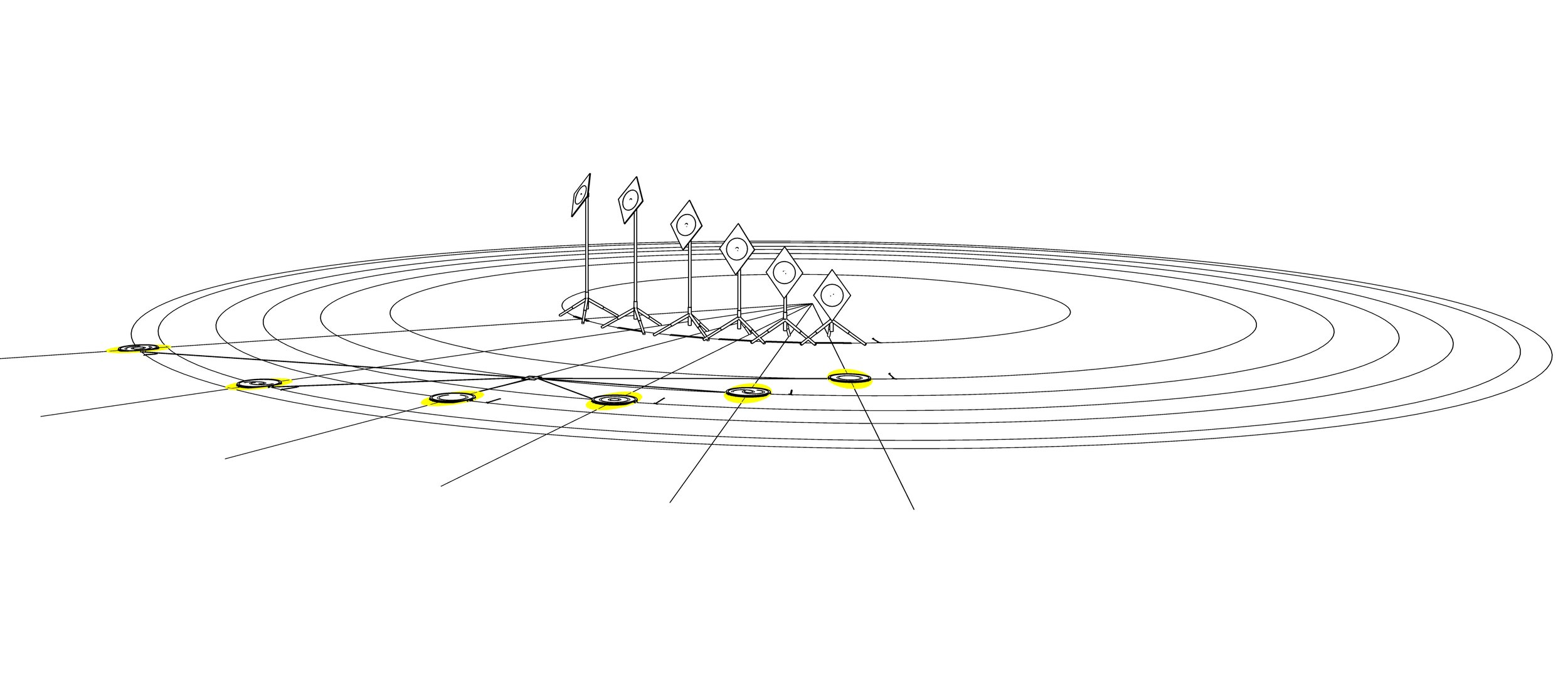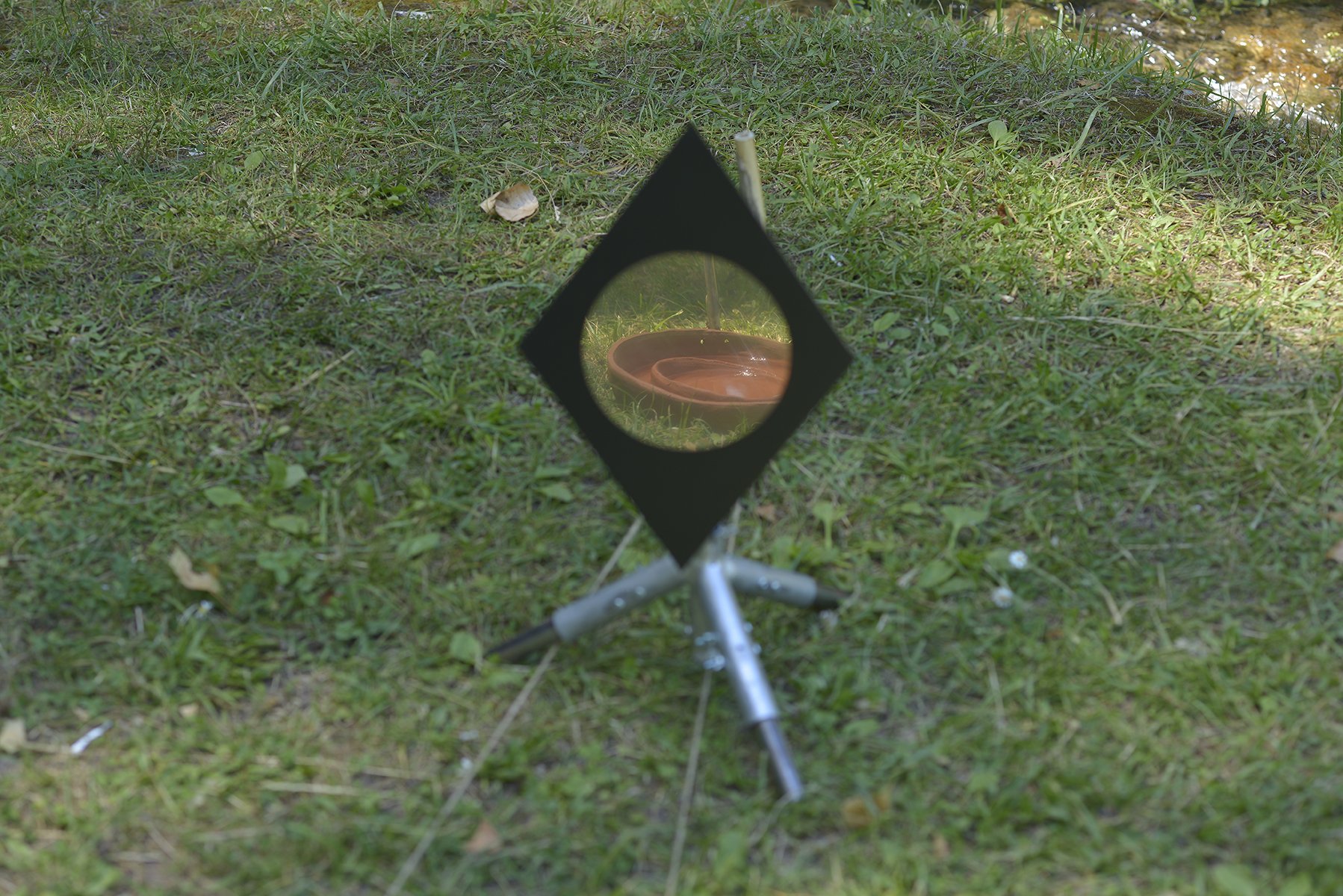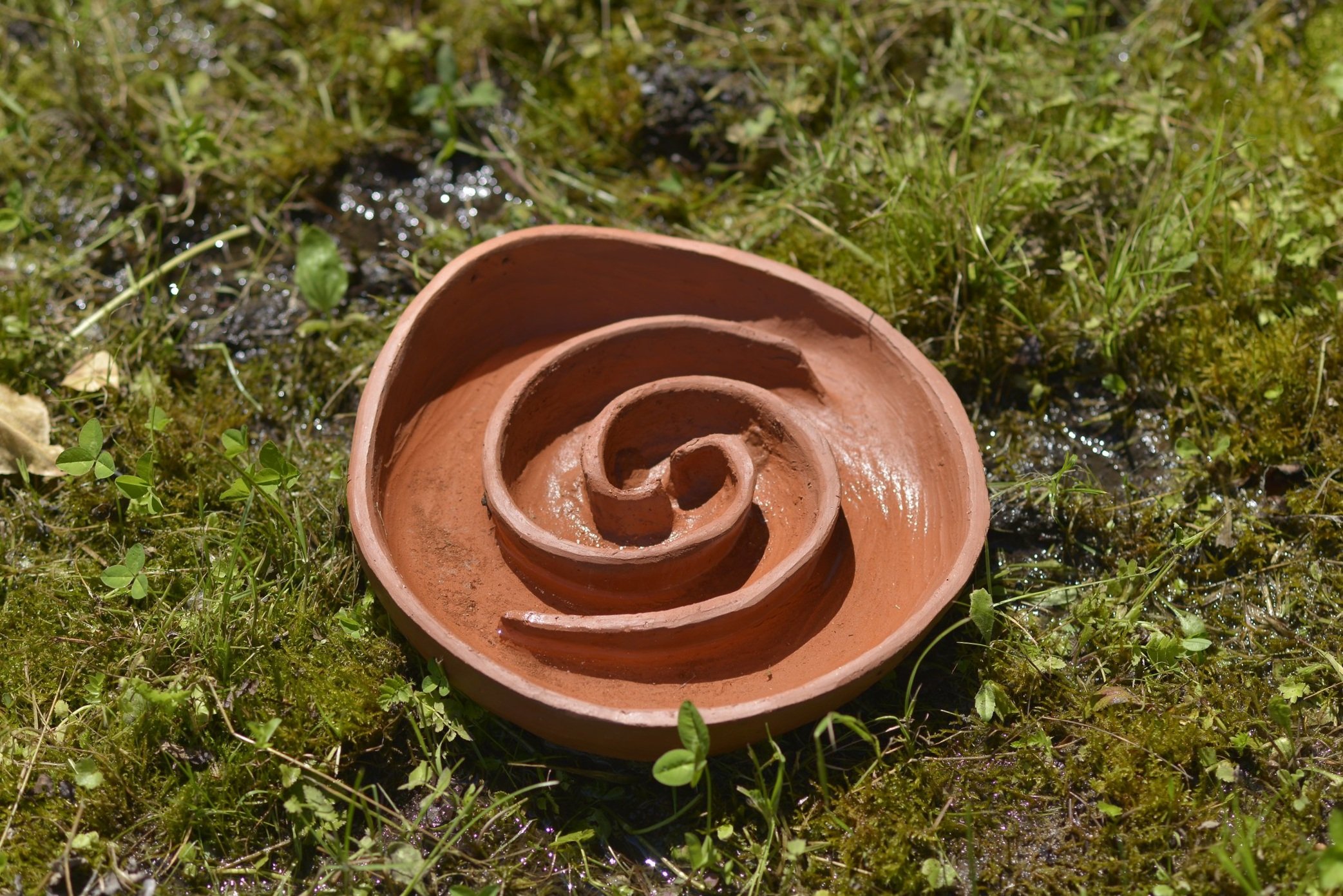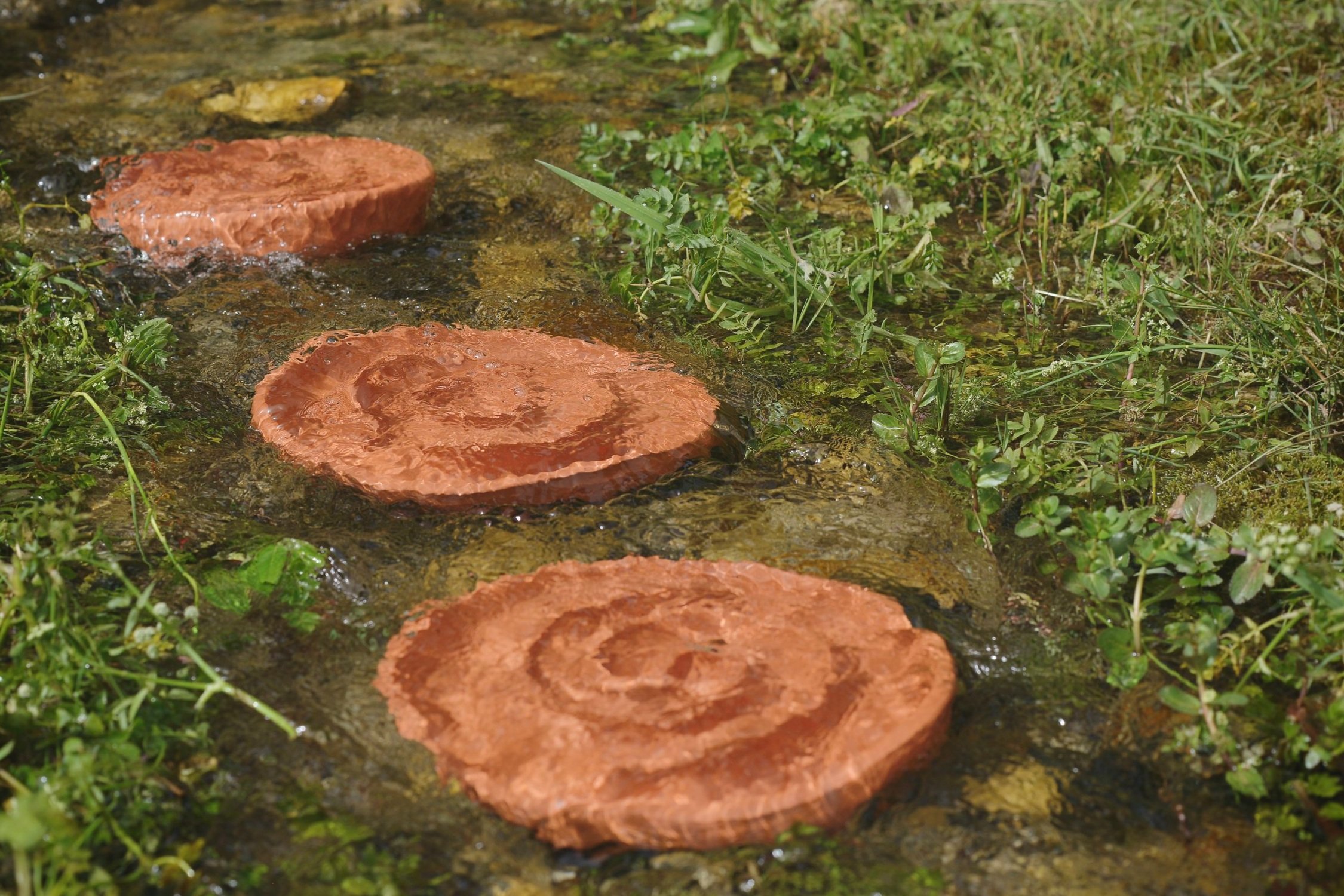Occhio di Luce : Ojo de Luz
Collaborative Interdisciplinary Project with Constanza Cuevas Puyol
• Summer Solstice – Southern Hemisphere: Centro Cultural Ceina, Santiago, Chile
• Summer Solstice – Northern Hemisphere: Centro di Arte e Natura L’Aquila Reale, Civitella di Licenza, Rome
Installation
Ceramics, stainless steel, metal, water.
El proyecto Occhio di Luce está financiado por el Ministerio de las Culturas, las Artes y el Patrimonio de Chile. –
FONDART NACIONAL
Ojo de Luz is an ephemeral, interdisciplinary installation that connects art, astronomy, and ecology through light and landscape. Created by Claudia Müller (art), Constanza Cuevas (architecture), and Tiziana Panizza (audiovisual), the work has been presented in different contexts, adapting to the astronomical cycles of each hemisphere.
Its first stage took place at L’Aquila Reale Arte e Natura (Licenza, Rome) in the Northern Hemisphere as a site-specific solar installation. The second stage was installed at Centro Cultural Ceina (Santiago, Chile), coinciding with the summer solstice in the Southern Hemisphere.
The installation consists of tripods holding mirrored steel rhombuses that reflect sunlight onto ceramic water-filled containers, evoking protoplanetary disks. Through this interaction with light and landscape, Ojo de Luz explores the relationship between astronomical cycles, the origin of water on Earth, and the search for habitable exoplanets.
This work invites us to synchronize our perception with planetary rhythms and reflect on the interconnection between the cosmos, nature, and life across both hemispheres.










This solar installation is made up of 6 pieces composed of 6 tripods of different heights that support rhombuses of 35 x 25 cm and 2 mm thick, cut in mirror steel. These pieces contain paint masks, exposing a central 15 cm circle inside them. During summer solstice days in the northern hemisphere this beam of light will reach the mirrored circle bouncing at 90º and reflecting a sunspot on each of the circular ceramic containers filled with water.














